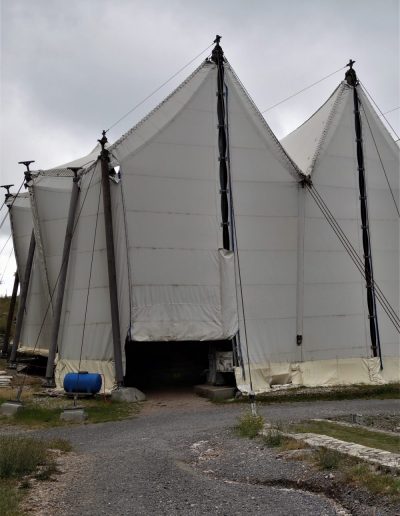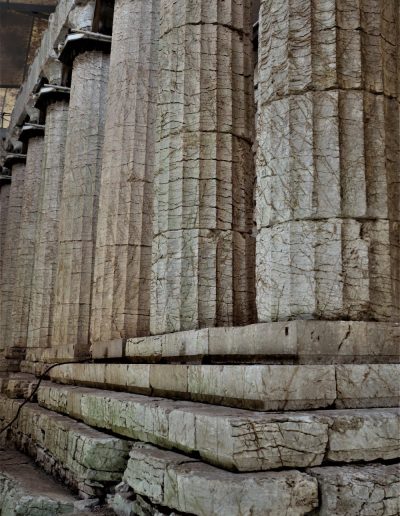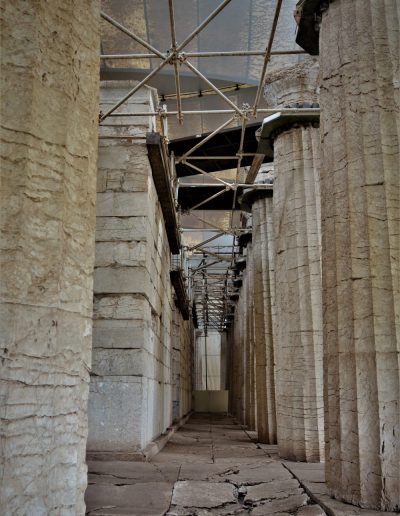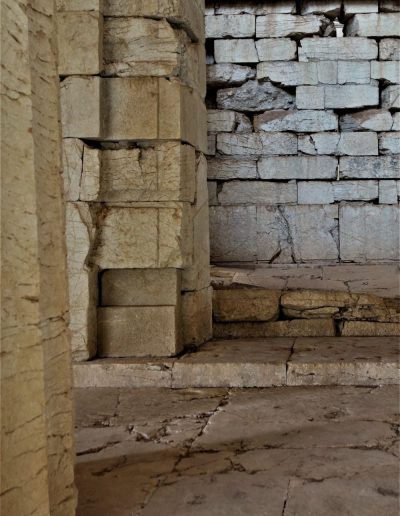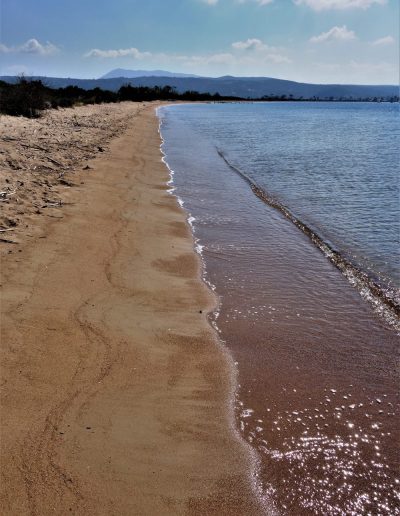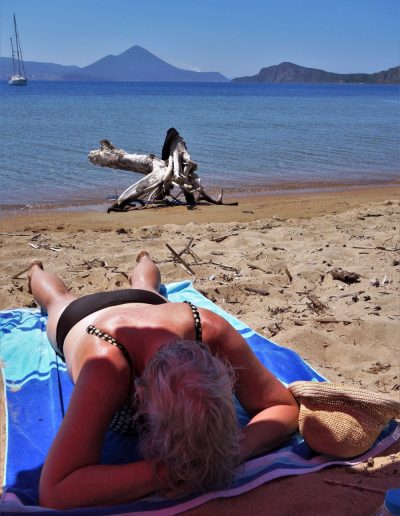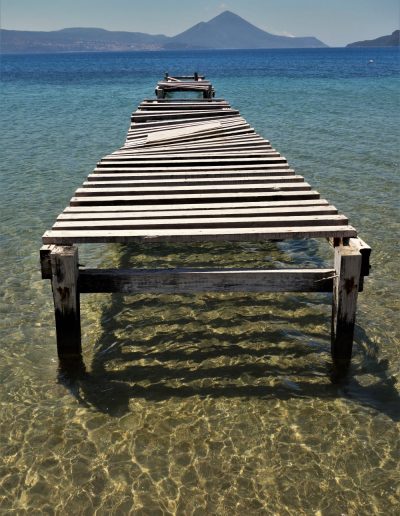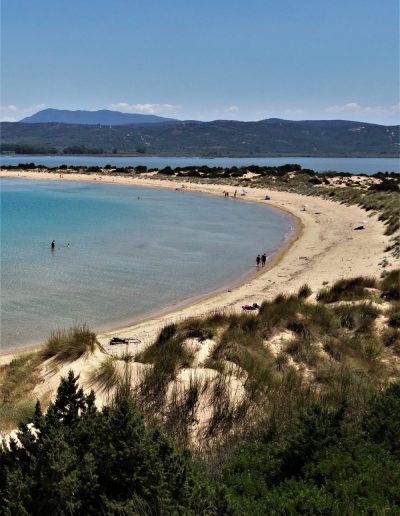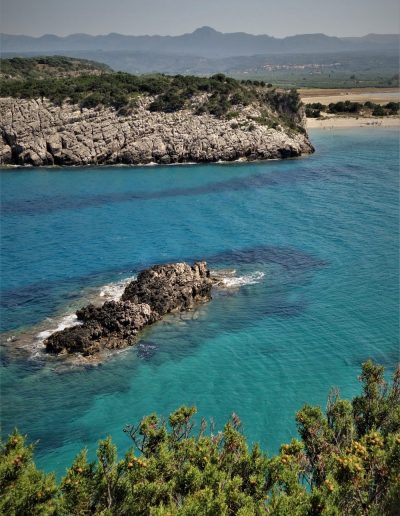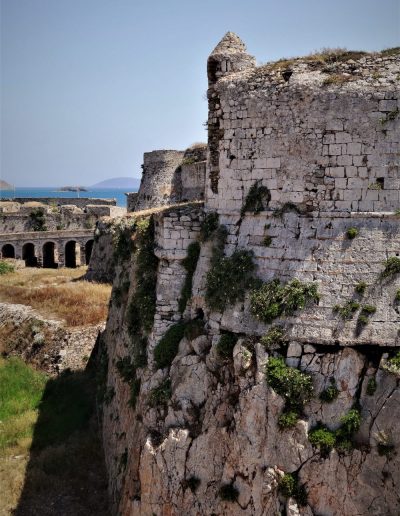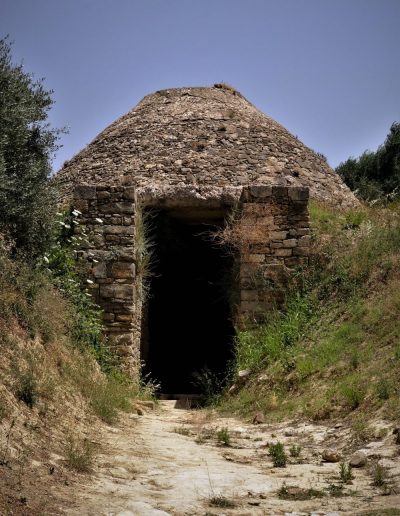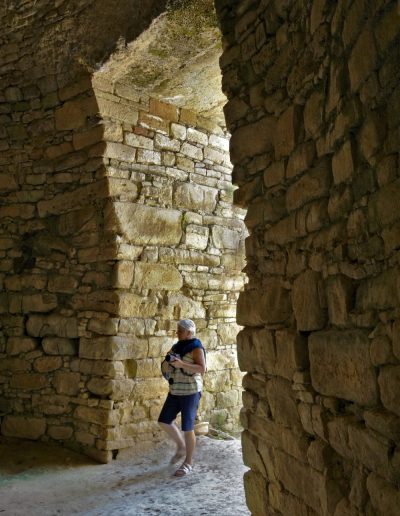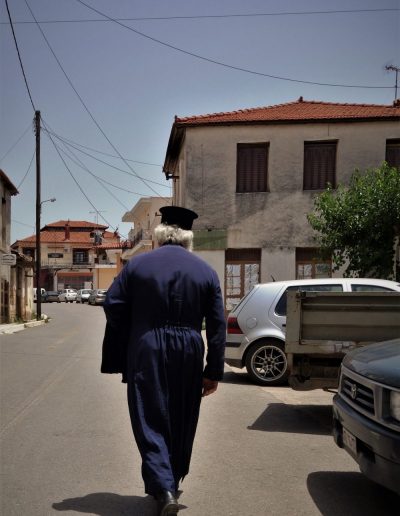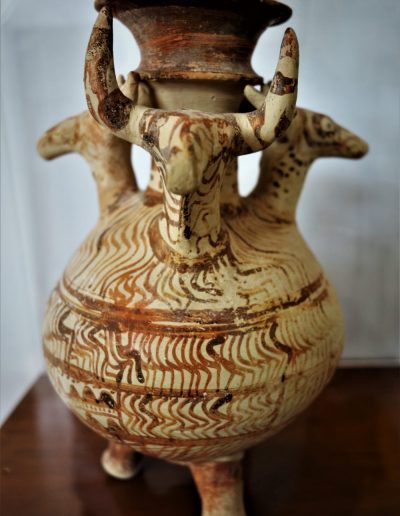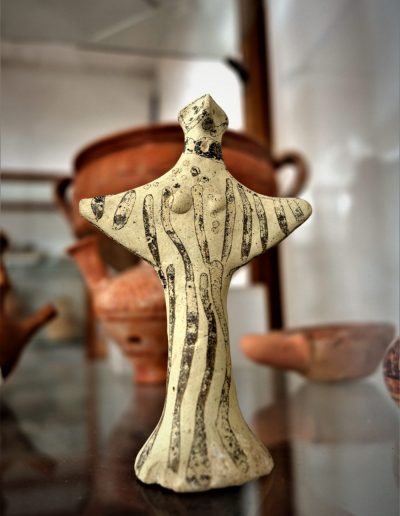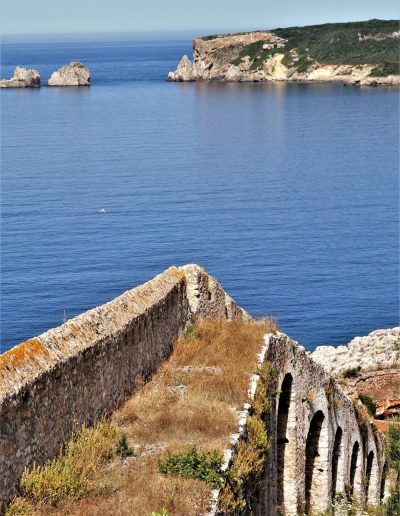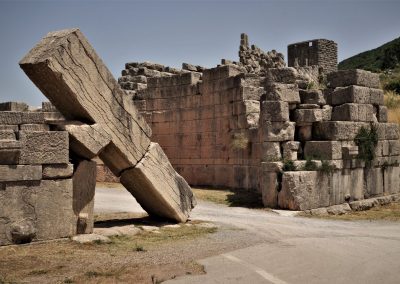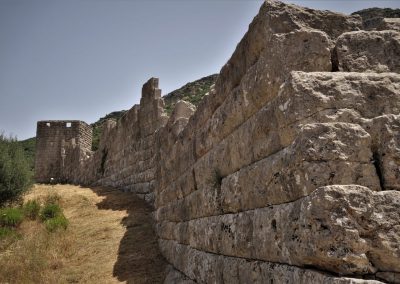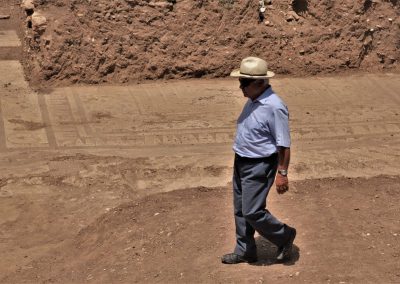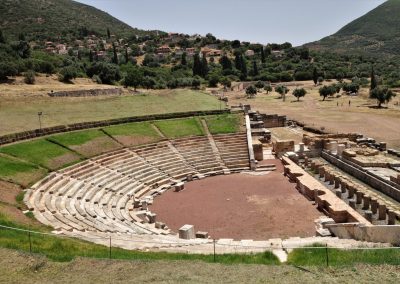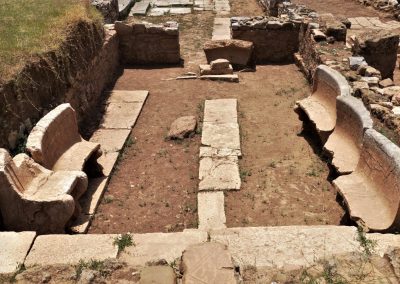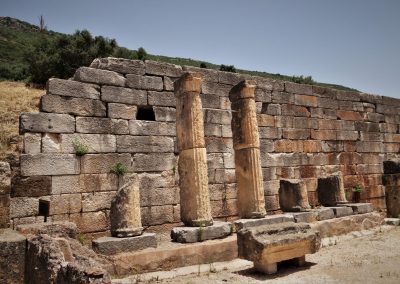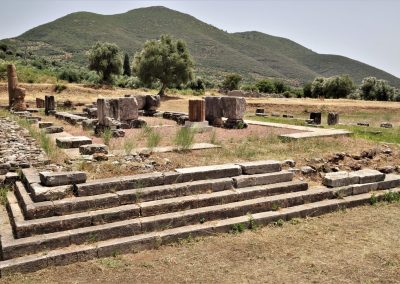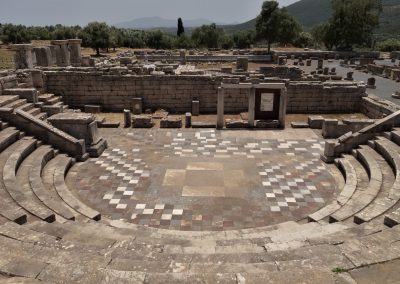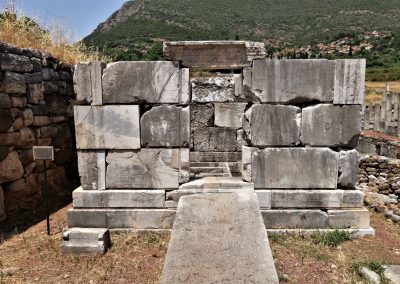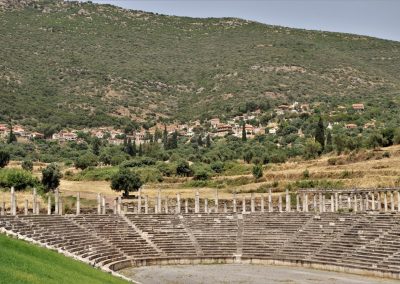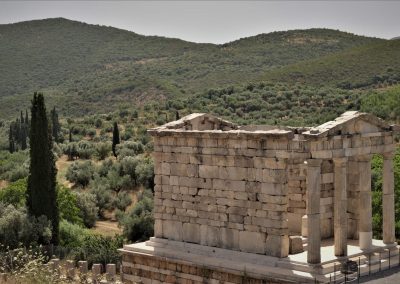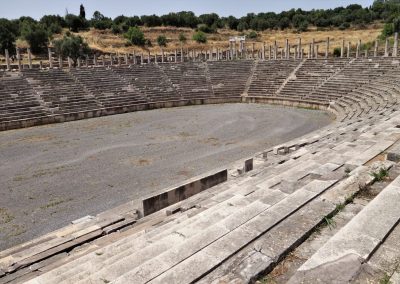- Left Olympia next morning (Friday) en route to Gialova, and detoured to visit the World Heritage Temple of Epicurean Apollo at Bassae. Wow.
- It’s in a remote mountain location 1,131 meters above sea level. (That’s roughly the same height as Hobart’s Mt Wellington/ kunanyi). And it was freezing in the third week of June!
- The Temple is enclosed in a protective tent while it’s being restored so expectations are low as you approach the site. Once inside however any sense of disappointment evaporates as you come within breathing distance of a remarkably intact building from 420 BC. It was designed by Iktinos, the architect of the Parthenon and uses all three of the Greek architectural orders. It has Doric columns, Ionic columns and one Corinthian column, the oldest identified to date.
- We reached Gialova (pronounced ya-lo-va) late afternoon and settled into our apartment for a relaxing six night stay.
- The first few days were spent enjoying the excellent beaches. Our favourites were Golden Beach, which runs along the north coast of the Bay of Navarino, and the beautiful, horseshoe-shaped Voidhokilia Beach which opens onto the west coast. It can get quite windy on the west coast of the Peloponnese so hitting Voidhokilia early is the best option.
- Gialova is a place that Greeks go to holiday so the tavernas were very different to those in Delphi and Olympia. The food was uniformly fabulous and we loved the hum of Greek language surrounding us as we ate.
- On the fourth day we headed south to Methoni which has an impressive 15th C Venetian fortress. Found a nice taverna for lunch where we were taken into the kitchen and shown the dishes of the day to choose from. This happened several times in the Peloponnese. So much nicer than a vinyl and plastic English language menu.
- On the last day we drove up to Chora, looking at some impressive tholos tombs on the way. The tombs are associated with the famous Palace of Nestor which was closed for renovation when we visited. The museum in Chora has a lot of artefacts from the Palace of Nestor so we we able to learn something about it.
- Our stay in Gialova was gorgeous. Greece is full of places like this that you’ve never heard of. Taking the time to find them is well worth the effort.
- Left Gialova en route to Karadmyli, stopping in Pylos then Ancient Messini on the way. Pylos, formerly known as Navarino, sits on the edge of of a huge bay that is steeped in historical significance. The Athenians had a rare win over the Spartans here, and in 1827 the British, French and Russian fleet smashed the Turkish, Egyptian and Tunisian fleet in a naval battle that proved to be decisive in the war for Greek independence. There are Ottoman-era castles on either side of Navarino Bay, though Neo Kastro on the south side at Pylos is by far the most intact and impressive. Walking its massive walls is a pleasant experience on a summer day.
- From Pylos we drove to Ancient Messini. This site is nowhere near as well known as others in the Peloponnese but we found it to be absolutely fantastic. We started at the Arcadian Gate and massive walls above the main site. When built by Epaminondas in 371 BC they ran for nine kilometres and encircled the town. We then spent some hours wandering through the Theatre, Basilica, Agora, Asklepion, Stadium, and Mausoleum of the Saithidae Family. It’s still being excavated and it was cool to watch the archaeologists at work. Put this one on your list of ‘best kept secrets’ to visit when you can.
- Drove on to Kardamyli that evening.

